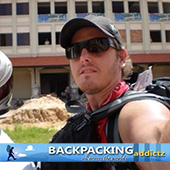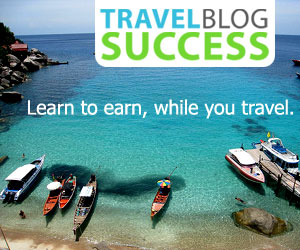- Population: 5.1 million (UN, 2005)
- Capital: Lome
- Area: 56,785 sq km (21,925 sq miles)
- Major languages: French (official), local languages
- Major religions: Indigenous beliefs, Christianity, Islam
- Life expectancy: 52 years (men), 56 years (women) (UN)
- Monetary unit: 1 CFA (Communaute Financiere Africaine) franc = 100 centimes
Then the German Togoland, the Togolese Republic has been a quiet nation, once the Pearl of West Africa, until rocked hard by the woes of violence and unrest which begun in the 90’s. Back in January 2010, the Togo National Football Team was attacked in Angola, and just a few months back the land was shaken by election protests that allege votes were rigged. Africa is regarded the “Land of Great Contrasts” but all we know, the reference could have been for Togo. Its vertical sliver shape permits the assortment of components for which the small nation is known. Tiny Togo’s diverse cultures, landscapes, flavours, sounds, and smells make up the wide spectrum of what is the Togolese identity, and this requires exploration and delighting in. In fact, Togo is an absolutely captivating country once the traveller sees it without the media melodrama.
GEOGRAPHY
Togo (8 00 N, 1 10 E) may be a small region at only 56,785 km2 but its diversity is nothing short of “mega” stretching through 6 distinct geographic regions. Dense forests and savannah form the north and low coastal plains, marshes, lagoons, and plateau form the south. Dividing the terrain are central hills, but the highest point lays on the south east, the Mont Agou, 986 m tall.
CLIMATE
The climate in Togo ranges from semi-arid and savannah in the north and tropical down south. Generally, it is hot, and to the south, humid as well. The wet season is through the months May to October that make roads totally impassable, while a dry spell occurs in between during the period between mid -July to mid-September. And as the hottest months are between February and April, November to January is the most favourable time to visit Togo.
PEOPLE
The vertical country has a population of 6,619,000 as of 2009 with 65% living in the rural areas of the country. There are over 40 ethnic groups in Togo like the Mina, Kabye, Cotocoli, Tchamba, Moba, and the largest, the Ewe with almost half the population. A minor population of Europeans and Lebanese (1%) reside in Togo as diplomats and standard immigrants.
LANGUAGE
FRENCH is used in commerce, as it is as well the official language. The major local languages are EWE and GEN in the south where its people are, and KABIYE and KOTOKOLI (also TEM) in the north. Most people do not speak ENGLISH, but volunteers come to Togo and projects allow English to be taught alongside French.
RELIGION
A large part of the Togolese population remains with their animist faith, an estimated 50%. Nevertheless, sizeable Christian (30%) and Muslim (20%) groups celebrate their beliefs in Togo with some freedom.
ATTRACTIONS
The sausage-shaped comes uniquely as possible through its captivating wonders, dwellers, waters, and wildlife. Unique as unique gets is one of the most beautiful cities, Lome – the only capital positioned next to a border. Lying in the Gulf of Benin, the celebrated hub is teeming with options for travellers from a cosmopolitan scene of bars and boulevards to a laid back beach scene just around the area. Alas, the shores of Lome are ideal only for bumming around if your swimming skills are short of professional level even by a speck. Otherwise, there are many pools surrounding the city along the beach. Water sports then are regarded with security at the Lake Togo. Meanwhile, something in between, literally, the Porto Seguro (Agbodrafo), is the lake-side resort between the Lake Togo and Atlantic that renders alternatives aplenty with, first, the largest pool in Western Africa in Hotel Sarkawa and sports with their waterskiing and sailing facilities.
And Aného, Togo’s colonial capital ‘til the 20’s, could be a hangout for a dreary afternoon where besides the beach, the traveller may indulge in the decaying colonial legacy such as the Peter and Paul Church. More in store are the beguiling cocoa and coffee plantations in the immediate interior behind the coasts, with its local gems that take the form of waterfalls and wildlife in its natural setting. For a more controlled safari, Togo’s Fazao and Keran National Parks are the must-sees, while the Fosse aux Lions, southwest of Dapaong, no matter how controlled the environment, one cannot be calm around the kings of the jungle. Farther up north perhaps to the UNESCO World Heritage Site for the mud-tower settlements of the Batammariba in Koutammakou is an absolutely tranquil experience. More in store for shopping as you go through the locals selling trinkets and textiles galore.
FOOD
However, gastronomically speaking, the tiny and curious-looking fishing villages could be worth the sizzle. With an ambiance set by the colonial architecture, lagoons, and the saline scent of the sea, devouring a smoky grilled fish is an unbeatable experience. There are copious bistros that line up the coast and most offering a sophisticated exoticism of French-Togolese fusion cuisine. Fresh capitaine fish is braised on the grill with cream sauce and vegetable sides, while the specialty antelope dishes are leaping everywhere and selling like hotcakes. But for a truly authentic experience, dining in a local home or at street shacks is the way to go. Maize is the most widely eaten food cooked as porridge (pates) and eaten with sauce, similar to fufu, the national dish made of thick pounded white yams. In some bistros prices could be pretty heavy, especially the French restos even when they’re offering you frog legs provencale. In any case, drink your blues away with a chilled Togolese fave lager or Castel in a frosted glass.
Josh Boorman
Editor-in-chief
Backpacking Addictz
Twitter: @backpackaddictz
Backpacking Addictz is a website set up by backpackers for the use of backpackers. On this site you will find a lot of very valuable backpacking information surrounding different destinations and countries from around the world. Also very helpful backpacking tips and travel advice on planning a budget travel and backpacking adventure. You will also find an enthusiastic and insightful backpacking blog which is regularly updated with new posts and article.
GEObackpacking – connecting backpackers worldwide – is a social network for backpackers and independent travelers to meet and share their stories, blogs, experiences, photos, videos, tips and information. Join today for FREE and start connecting – geobackpacking.com







Leave A Response